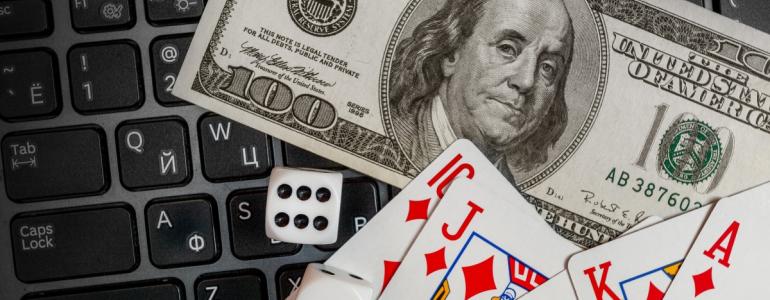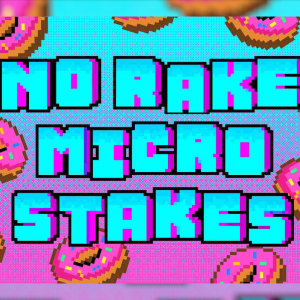How Do Casinos Make Money on Poker? The Truth Behind the Tables
12 hours ago

22 Oct
Poker looks different from other games in a casino. The house doesn’t compete against the players, and yet it still earns a steady income every hour the cards are in the air. The secret lies in structure, not luck.
Every hand that’s dealt and every tournament that’s run carries a small built-in charge, known as rake or fees. Those small percentages, collected thousands of times a day, keep poker profitable for the venue.
Understanding how those fees work offers insight into why poker remains a centerpiece of casino culture, even if it isn’t the highest-margin game in the room.
What Is Rake? The Casino’s Cut of the Action
Poker rooms rely on a simple, consistent system to earn: the rake. This is a small percentage taken from each pot in cash games, or from every entry in tournaments.
In a standard cash game, the house collects a piece of each pot once it exceeds a certain size. That cut varies by stake but usually falls between 3% and 10; higher-stakes games often feature smaller percentages but larger caps.
Some rooms skip per-hand rake entirely and charge a time fee, billing each player a set amount per half hour or hour of play, while others use hybrid systems, combining both methods for flexibility. Regardless of format, the house edge model ensures steady revenue.
How Rake Is Calculated
Casinos use clear rules to collect rake, and understanding the math behind it shows how the business stays consistent. Here’s how the process typically works:
- Determine the percentage: Most live rooms take 5% of each pot.
- Apply the cap: Each table has a limit—often $4 to $10 per hand—so the rake doesn’t grow endlessly.
- Count the pot: Dealers track each round and remove the casino’s share once the hand ends.
- Track limits by stakes: Low-limit games may have higher relative percentages, while high-stakes tables pay less proportionally but reach the cap faster.
- Special cases: In no-limit or pot-limit games, caps prevent large single-hand rakes; fixed-limit tables use smaller, consistent amounts.
The beauty of this model lies in its reliability. A casino doesn’t need swings or big wins: it earns gradually, hand by hand. That steady margin is the practical answer to how casinos make money on poker when poker itself isn’t a house-banked game.
Understanding Rake Caps
A rake cap sets the maximum amount a casino can collect from a single hand. It prevents the house from taking too much out of big pots and keeps the game appealing for players. Caps vary based on table limits, region, and casino policy. For example, a $1/$2 no-limit table might have a $5 cap, while higher stakes could top out at $10 or more.
Real money online poker uses similar logic but often lowers the percentage because of reduced overhead. Regional differences also matter; European and Asian venues may impose stricter limits to comply with gaming commissions, while U.S. casinos often base caps on local competition.
Promotional Drops and Jackpot Funds
Many poker rooms add a small promotional drop on top of the standard rake. This extra portion supports special payouts and player promotions, creating excitement and loyalty. These funds don’t go directly to the casino’s profit line but still serve its business goals by keeping players in seats longer.
Here’s how promotional drops usually work:
- Bad Beat Jackpots – A small slice of each pot funds a shared pool that rewards players when a very strong hand loses to an even stronger one.
- High-Hand Bonuses – Timed promotions where players earn cash or chips for hitting specific hands within certain hours.
- Leaderboards and Room Giveaways – Prize pools built from promotional funds to encourage consistent attendance.
While these drops seem like free money, they represent part of how casinos make money indirectly. The programs attract steady traffic and extend playtime, which in turn increases the number of raked hands and overall revenue flow.
Tournament Revenue: Buy-Ins and Fees
Poker tournaments use a separate model built around entry fees. Every buy-in is split into two parts: the prize pool and the administrative fee. A typical structure might look like $100+$10, where $100 funds the prize pool and $10 goes to the casino for hosting, staffing, and logistics.
That $10 may sound small, but multiplied across hundreds or thousands of entries, it forms a steady revenue stream. Major tournament series rely on this system to cover dealer wages, registration software, and event marketing.
Large casinos sometimes layer additional charges, such as late-entry fees or seat reservation costs, which help offset scheduling and staffing complexity. Smaller venues often build value through player rewards or free entries to keep attendance strong.
Through this fee-based setup, casinos make money off poker even when they don’t share in the pots. They run the show, manage the logistics, and earn from the organization rather than participation.
Table Economics: Labor and Floor Space
Poker rooms operate under different economics than slots or blackjack pits. A poker table uses more space, more staff, and slower turnover. Yet casinos maintain them because they draw a loyal base and create movement across the property.
Each table requires a paid dealer, a floor manager to oversee play, and often security or chip runners. Labor costs are significant, which is why consistent rake or time charges are critical for sustainability. Table occupancy also matters; most casinos target near-full seating, especially during peak hours, to make the area worthwhile.
Some casinos treat poker as a prestige feature rather than a primary profit center. A well-run room attracts visitors who later spend on hotels, restaurants, or slots. In short, poker at casinos supports the broader ecosystem even when its direct margins are smaller than house-banked games.
Time-Charge and Hourly Models
Not every casino takes a percentage of each pot. Some use an hourly seat charge, especially in mid- and high-stakes cash games where pots can grow large quickly. Instead of paying rake, each player pays a flat rate for their seat—often every 30 or 60 minutes. Dealers collect the payment directly, or players purchase time cards in advance.
This system benefits both sides. The casino earns a steady income no matter how big or small the pots get, and players avoid losing large sums to rake during extended sessions. Time charges also simplify accounting, since each seat guarantees revenue over time rather than per hand.
So, do casinos make money from poker even without per-pot commissions? Absolutely. The house earns by renting the table, maintaining the staff, and providing a regulated environment for play.
Secondary Revenue Streams
Poker rooms rarely stand alone as their only income source. They link directly to other amenities that help round out total revenue. Here are the most common:
- Food and Drink Sales – Players often stay for hours, buying meals, snacks, and beverages. Some rooms even offer in-seat dining for convenience.
- Hotel Packages and Player Comps – Regular visitors may receive discounted stays or casino credits, driving repeat visits that feed into overall spending.
- Cross-Play Spending – Many poker players wander to the pit or slots during breaks, adding revenue to higher-margin games.
- Membership or Access Fees – Private clubs sometimes charge monthly dues or parking rates for exclusivity and stability.
Regulation and Compliance
Poker revenue isn’t only shaped by business models; it’s tightly guided by law. Casinos must report all rake, time fees, and promotional drops under local gaming regulations. These rules keep earnings transparent and protect players from unfair practices.
In many U.S. states, regulators set maximum rake percentages and cap promotional contributions. Some even require separate accounting for jackpot funds to confirm that the money goes back to players. Online platforms face similar scrutiny, where independent audits verify the fairness of rake calculations and random number generators.
This oversight limits how aggressively casinos can charge but guarantees trust and consistency. Players return when they know the system is predictable, and predictable games create dependable revenue.
So, How Does the House Make Money on Poker?
Casinos don’t need to win a single hand to earn from poker. Their income flows through the organization, not the opposition. Every raked pot, seat charge, and entry fee pays for the tables, staff, and service that keep the games running.
Poker brings steady traffic and prestige, often leading players to other areas of the property. Even when the direct margins are smaller than slots or roulette, poker builds community, fills hotel rooms, and sustains long sessions that ripple into other sales.
In the end, the truth behind the tables is simple: poker may be a game between players, but it’s still a business for the house.







Comments
You need to be logged in to post a new comment